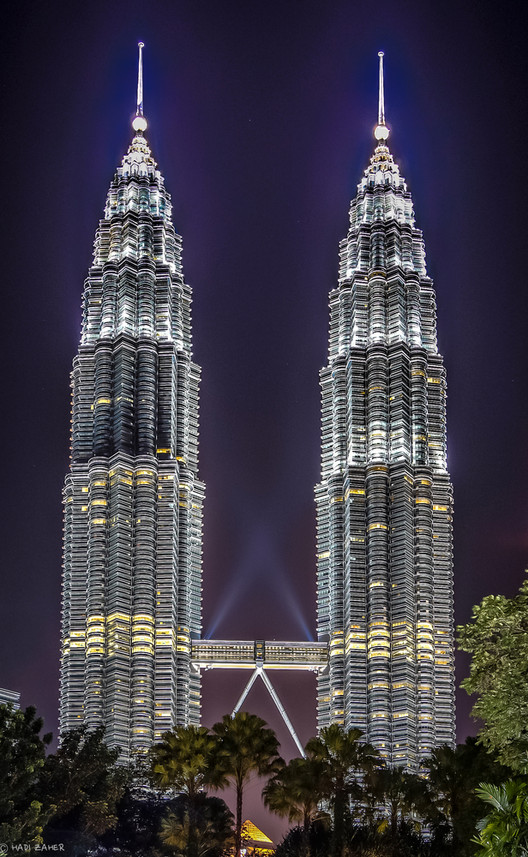
In the modern era of design where advancements in technology and construction have enabled architects to build better, faster, and taller, the sky’s the limit. Every few months, another headline boasts the tallest residential tower or the newly constructed office building that breaks yet another record for its impressive height. But as time goes on and new projects are completed, trends show that the United States is falling out of the spotlight in terms of being able to claim the title of world’s tallest building, and the drawing boards show that no American city will be reclaiming this title any time soon.

The United States is known as the birthplace of the modern skyscraper and claimed to being home to the world’s tallest buildings throughout most of the 20th century. For many years, Sears Tower in Chicago was dubbed as the pinnacle of modern construction and technological advancements- that is, until 1997 when Cesar Pelli’s Petronas Towers in Malaysia overtook that title with their iconic twin spires. That seemed to mark the start of the race to build more and more skyscrapers, with Dubai, China, and cities across Southeast Asia joining in- with taller buildings being constructed at faster rates. At the current pace, the number of skyscrapers over 500 feet tall in China will be four times greater than the number of those same height buildings in the United States, just in the next few years.

New York City’s highly anticipated One Vanderbilt was completed only a few weeks ago, and although it was crowned as one of the tallest office towers in Manhattan at an impressive height of 1,401 feet, it can’t begin to compare with the mega tall buildings, defined as standing at a minimum of 1,969 feet. In fact, only one building in the United States is consistently featured on the CTBUH’s top ten list- One World Trade Center, which stands at 1,776 feet, a symbol of the year that the country’s Declaration of Independence was signed. So what’s behind the change in the lack of super-tall buildings, and will the United States ever aim for their own megastructure in the future? Research shows that the tall building decline may have contributed to rising construction costs, limitations placed by building codes, and fluctuating market demands.

New York City is the most expensive place in the world for construction, with an average cost of $362 per square foot, according to a survey launched by Turner and Townsend in 2018. To compare, Hong Kong is a close second at $344 per square foot, Dubai is $134 per square foot, and Beijing comes in at a cheap $75 per square foot. In the United States, developers often find private investors to fund the costs for skyscrapers, and with changing socio-economic conditions and rapidly shifting market needs, multi-year construction projects can often be seen as risky. In other places around the world, projects are often funded by or have connections to the government, making the financing aspect much less of a problem.
American cities are also much more sensitive to the relationships between sunlight and shadows cast by a building. In 1916, New York City began restricting tall building construction after the only 538-foot tall Equitable Building was completed in lower Manhattan. It cast a 7-acre shadow on the surrounding streets which triggered massive protests from nearby residents who stated that the building made them feel like they “lived at the bottom of a canyon”. As a response, New York required setbacks to allow sunlight to reach the streets below. Zoning rules have only expanded to further restrict building shape and height.

The shadows that are cast across the urban landscape still cause an uproar from city preservationist, and have drawn protests by community boards, critics (including Warren St. John who wrote a piece about it in the New York Times), and organizations who claim that residents should have more say in the “accidental transformation” of New York’s skyline, should more tall buildings be built.
Another reason behind the lack of tall structures is due to shifting market conditions that drive the type of buildings that developers seek to construct. While tall buildings were once solely reserved for office space, more sites are being transformed into mixed-use buildings that combine a multitude of programmatic elements for a greater return on investment. Office space, condominiums, hotels, and retail stores are often combined into one development. Although residential buildings are seen as more valuable the taller they are, the market doesn’t demand multiple buildings that reach more than 60 stories high. 432 Park Avenue, which opened in 2016 and is the tallest residential building in the world, sold out its units for over two billion dollars- a price that many can’t afford. Its 95th-floor penthouse carries a price tag of over 80 million dollars.
For now, New York City, or any other American city doesn't seem to have their hopes set on stealing the crown as the world’s tallest building any time in the near future. As construction costs soar, building codes limit how tall towers can be, and the changing market dictates what the real estate market needs, America may not be responsible for large shifts in the world's skyline.


